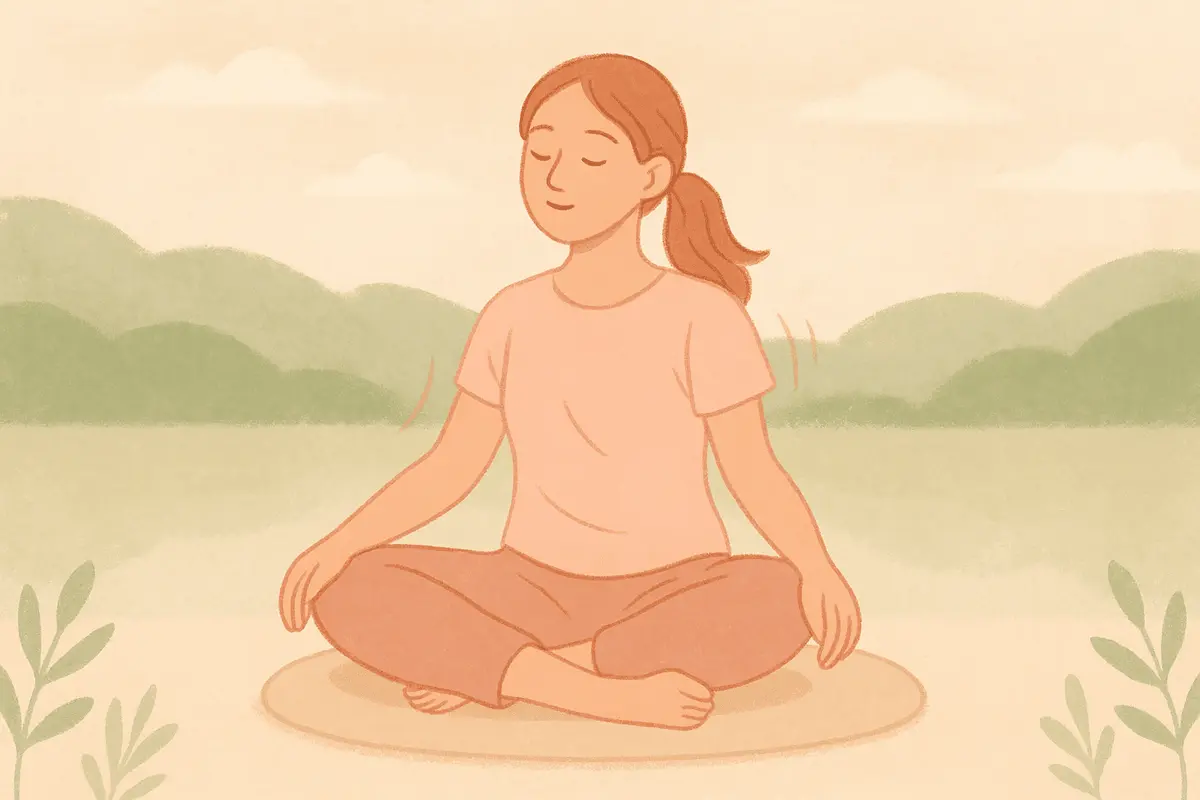Swaying or rhythmic rocking uses gentle, repetitive body movements to naturally reduce anxiety and emotional overwhelm. This powerful self-soothing technique activates your body's innate calming systems while providing immediate grounding through accessible movement that requires no equipment or special training.

Feeling overwhelmed and need immediate relief? Swaying or rhythmic rocking offers a simple technique that uses your body's natural calming system to quickly reduce anxiety and stress in just 2-5 minutes. This method involves gentle, repetitive movements of the body—either standing, seated, or lying down—to soothe feelings of overstimulation, anxiety, or emotional hyperarousal.
This evidence-based approach leverages natural calming rhythms to promote immediate grounding, emotional regulation, and nervous system stabilization. By engaging the body's innate sensory comfort mechanisms, rhythmic movement provides an accessible and effective tool for rapid emotional relief and stress reduction.
Swaying or rhythmic rocking works because it taps into three of your body's built-in calming systems at the same time. Think of it like pressing multiple reset buttons on your stress response—each one working together to bring you back to a peaceful state.
Your inner balance system gets activated first. Deep inside your ears, you have a natural balance system called the vestibular system—think of it like your body's internal GPS. When you rock gently, this system sends "all is well" signals to the parts of your brain that control emotions and stress. It's the same reason babies calm down when you rock them. Your brain remembers this soothing pattern from when you were little, so gentle rocking automatically triggers feelings of safety and comfort.
Your body's brake system kicks in next. You have two main control systems in your body—one that speeds you up when there's danger (like a gas pedal) and one that slows you down when it's safe (like a brake pedal). Gentle rocking activates your body's natural brake system, called the parasympathetic nervous system. When this happens, your heart rate slows down, your breathing gets deeper, and your muscles start to relax. It's like your body is saying, "Okay, we're safe now—time to rest."
Your brain releases feel-good chemicals. The rhythmic movement tells your brain to release special chemicals called oxytocin and endorphins. Think of these as your body's natural mood boosters—the same chemicals that make you feel good after a hug or when you laugh really hard. Oxytocin is sometimes called the "comfort hormone" because it creates feelings of safety and connection. These chemicals work like natural anxiety medicine that your body makes on its own.
Your anxious thoughts get interrupted. When you focus on the gentle back-and-forth movement, your mind has something specific to pay attention to instead of worrying. It's like changing the channel on a TV that's stuck on an anxiety program. The rhythmic motion creates a kind of moving meditation that pulls your attention away from stress and into the present moment.
All of these systems work together like a well-coordinated team. The result is that you feel calmer, more grounded, and less overwhelmed—often within just a few minutes. Your body essentially remembers how to feel safe and peaceful, and the gentle rocking helps it get there naturally.
"I feel dizzy or unsteady": Slow down the movement, sit down, or try smaller motions. Dizziness usually indicates moving too quickly or too broadly for your current vestibular sensitivity.
"I feel silly or self-conscious": Remember this is a scientifically-backed technique used in professional therapy settings. Start with very subtle movements in private until you build confidence with the practice.
"My mind won't stop racing": This is common initially. Don't fight the thoughts—simply notice them and gently return attention to the physical sensations of movement as your nervous system gradually settles.
"I don't feel anything": Some people need more practice to notice subtle changes. Try extending the practice to 5-7 minutes or combining with deep breathing to enhance the effects.
"I feel more agitated": Occasionally, movement can initially increase awareness of tension. Continue gently—often the agitation passes within 1-2 minutes as your nervous system adjusts to the new rhythm.